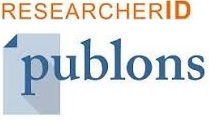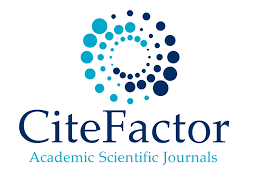Analysis Of The Influence Of Media On Cultural Change In The Digital Age
Abstract
Keywords
Full Text:
PDFReferences
Ahmed, I. S. Y., Miladi, N., Messaoud, M. Ben, Labidi, F., Ashour, A., Almohannadi, H., Fetais, A., Alkhateeb, G., & Alorfe, A. (2022). Social media networks as platforms for culture and identity interplay among Qatari youth. Journal of Arab & Muslim Media Research, 15(2), 179–203. https://doi.org/10.1386/jammr_00046_1
Baral, R. (2023). Exploring the Prominent Role of Social Institutions in Society. International Research Journal of MMC, 4(2), 68–74. https://doi.org/10.3126/irjmmc.v4i2.56015
Behbehanian, L., & Burawoy, M. (2014). Appendix: Global pedagogy in a digital age. Current Sociology, 62(2), 285–291. https://doi.org/10.1177/0011392113515799
Bengtsson, S., & Johansson, S. (2021). A phenomenology of news: Understanding news in digital culture. Journalism, 22(11), 2873–2889. https://doi.org/10.1177/1464884919901194
Blandi, L., Sabbatucci, M., Dallagiacoma, G., Alberti, F., Bertuccio, P., & Odone, A. (2022). Digital Information Approach through Social Media among Gen Z and Millennials: The Global Scenario during the COVID-19 Pandemic. Vaccines, 10(11), 1822. https://doi.org/10.3390/vaccines10111822
Boxman-Shabtai, L., & Shifman, L. (2016). Digital humor and the articulation of locality in an age of global flows. HUMOR, 29(1), 1–24. https://doi.org/10.1515/humor-2015-0127
Comunello, F., & Mulargia, S. (2015). User-Generated Video Gaming. Games and Culture, 10(1), 57–80. https://doi.org/10.1177/1555412014557028
Cover, R. (2022). Identity and Digital Communication. Routledge. https://doi.org/10.4324/9781003296652
Feigelman, A. (2021). Digital sets: power and subjectivity in the era of new media. The Digital Scholar Philosopher s Lab, 4(1), 29–36. https://doi.org/10.32326/2618-9267-2021-4-1-29-36
Firanti, D., Darmawan, B., & Firdausah, L. (2020). Changes In the Trend of Communication In Interaction In the Digital Millennium. Proceedings of the Proceedings of the First Brawijaya International Conference on Social and Political Sciences, BSPACE, 26-28 November, 2019, Malang, East Java, Indonesia. https://doi.org/10.4108/eai.26-11-2019.2295214
Gainous, J., & Wagner, K. M. (2023). Surfing to the political extremes: Digital media, social media, and policy attitude polarization. Social Science Quarterly, 104(4), 547–558. https://doi.org/10.1111/ssqu.13273
Gu, J. (2022). Social Media Affects the Way of Communication. BCP Education & Psychology, 7, 290–294. https://doi.org/10.54691/bcpep.v7i.2676
Hakim, J. (2023). Queer Men’s Bodies and Digital Media. In Oxford Research Encyclopedia of Communication. Oxford University Press. https://doi.org/10.1093/acrefore/9780190228613.013.1361
Hanusch, F. (2022). Change and Continuity in Digital Journalism: The Covid-19 Pandemic as Situational Context for Broader Arguments about the Field. Digital Journalism, 10(6), 1135–1140. https://doi.org/10.1080/21670811.2022.2092020
Hoehe, M. R., & Thibaut, F. (2020). Going digital: how technology use may influence human brains and behavior. Dialogues in Clinical Neuroscience, 22(2), 93–97. https://doi.org/10.31887/DCNS.2020.22.2/mhoehe
Holkar, R. (2022). How Digital Communication is Reshaping Interpersonal Relationships in Urban India: A Study of Communication Trends Among Young Adults. Journal of Public Representative and Society Provision, 2(3), 89–94. https://doi.org/10.55885/jprsp.v2i3.233
Holmes, S. (2023). Toward a general theory of digital identities. Science Fiction Film & Television, 16(1–2), 51–74. https://doi.org/10.3828/sfftv.2023.4
IBRAHIMOVA, P. (2023). The Role of Social Media in the Process of Development of the Socio-Political Structure of Turkish Society and Azerbaijani-Turkish Relations. Uluslararası Yönetim Akademisi Dergisi, 6(1), 58–69. https://doi.org/10.33712/mana.1243216
II, H., Amin, T. S., & Zulfitri, Z. (2022). Community’s Role In Developing Local Culture And Wisdom In The Digital Media Era. ANTHOR: Education and Learning Journal, 1(6), 394–403. https://doi.org/10.31004/anthor.v1i6.144
Jones, J. M. (2009). Book Review: Karaganis, Joe. (Ed.). (2007). Structures of Participation in Digital Culture. New York: Social Science Research Council. 284 pages. Journal of Business and Technical Communication, 23(3), 385–390. https://doi.org/10.1177/1050651909333283
Jonsson, C., & Muhonen, A. (2014). Multilingual repertoires and the relocalization of manga in digital media. Discourse, Context & Media, 4–5, 87–100. https://doi.org/10.1016/j.dcm.2014.05.002
Kesner, L., & Horáček, J. (2022). Global Adversities, the Media, and Mental Health. Frontiers in Psychiatry, 12. https://doi.org/10.3389/fpsyt.2021.809239
Korte, M. (2020). The impact of the digital revolution on human brain and behavior: where do we stand? Dialogues in Clinical Neuroscience, 22(2), 101–111. https://doi.org/10.31887/DCNS.2020.22.2/mkorte
Mills, C. (2020). The transformative, mediational and synergist roles of digital media. Communication Research and Practice, 6(2), 71–78. https://doi.org/10.1080/22041451.2020.1750125
Mirvaisi, M., & Kaffashpoor, A. (2023). Culture and religion creolisation impact on digital advertisement of Muslim users of Instagram. HTS Teologiese Studies / Theological Studies, 79(3). https://doi.org/10.4102/hts.v79i1.8054
Moe-Byrne, T., Knapp, P., Perry, D., Achten, J., Spoors, L., Appelbe, D., Roche, J., Martin-Kerry, J. M., Sheridan, R., & Higgins, S. (2022). Does digital, multimedia information increase recruitment and retention in a children’s wrist fracture treatment trial, and what do people think of it? A randomised controlled Study Within A Trial (SWAT). BMJ Open, 12(7), e057508. https://doi.org/10.1136/bmjopen-2021-057508
Park, S. (2017). Information is Power. In Digital Capital (pp. 161–183). Palgrave Macmillan UK. https://doi.org/10.1057/978-1-137-59332-0_8
Perry, L., Stoner, L., Schleser, M., Stoner, K. R., Wadsworth, D., Page, R., & Tarrant, M. A. (2015). Lane, Perry., Lee, Stoner., Max, Schleser., Krystina, R, Stoner., Daniel, Wadsworth., Rachel, Page., Michael, A., Tarrant. (2015). Digital media as a reflective tool: creating appropriate spaces for students to become introspective. Compare, 45(2):323-330. Compare: A Journal of Comparative and International Education, 45(2), 323–330. https://doi.org/10.1080/03057925.2014.993237
Petersen, A., Tanner, C., & Munsie, M. (2019). Navigating the cartographies of trust: how patients and carers establish the credibility of online treatment claims. Sociology of Health & Illness, 41(S1), 50–64. https://doi.org/10.1111/1467-9566.12872
Peukert, C. (2019). The next wave of digital technological change and the cultural industries. Journal of Cultural Economics, 43(2), 189–210. https://doi.org/10.1007/s10824-018-9336-2
Porter, T., & Tan, N. (2023). Introduction: democracy and digitization. Globalizations, 20(1), 132–136. https://doi.org/10.1080/14747731.2023.2156033
Potter, A. (2021). Globalising the local in children’s television for the post-network era: How Disney+ and BBC Studios helped Bluey the Australian cattle dog jump the national fence. International Journal of Cultural Studies, 24(2), 216–232. https://doi.org/10.1177/1367877920941869
Qi, L. (2023). Source text readers as censors in the digital age: a paratextual examination of the English translation of Wuhan Diary. Perspectives, 31(2), 282–296. https://doi.org/10.1080/0907676X.2021.1939741
Qiu, J., & Loader, B. D. (2016). Understanding digital cultures. Information, Communication & Society, 19(1), 1–3. https://doi.org/10.1080/1369118X.2015.1094114
Radwan, M. (2022). Effect of social media usage on the cultural identity of rural people: a case study of Bamha village, Egypt. Humanities and Social Sciences Communications, 9(1), 248. https://doi.org/10.1057/s41599-022-01268-4
Rohi Rani. (2022). The Impact of Digital World on Our Identity. The Creative Launcher, 7(1), 27–32. https://doi.org/10.53032/tcl.2022.7.1.05
Saludadez, J. A. (2022). Digital Media. In The Routledge Handbook of the Communicative Constitution of Organization (pp. 409–420). Routledge. https://doi.org/10.4324/9781003224914-30
Samy, S. (2022). Influence, Reconstruct, and Promote Agenda via Content on Social Media. Pakistan Journal of Humanities and Social Sciences, 10(4). https://doi.org/10.52131/pjhss.2022.1004.0290
Sanz, E. (2014). On the Symbolic Production of Digital Markets for Cultural Goods. Journal of Cultural Economy, 7(2), 131–144. https://doi.org/10.1080/17530350.2013.851028
Schaefer, M., & Rotte, M. (2010). Combining a semantic differential with fMRI to investigate brands as cultural symbols. Social Cognitive and Affective Neuroscience, 5(2–3), 274–281. https://doi.org/10.1093/scan/nsp055
Suseno, Y., & Nguyen, D. T. (2023). Culture is in the eye of the beholder: using metaphoric representations of cultural values to enhance consumer digital engagement. Journal of Strategic Marketing, 31(2), 321–342. https://doi.org/10.1080/0965254X.2021.1902373
Tasruddin, R., A, N., & AB, S. (2022). THE ROLE OF MEDIA ON SOCIO CULTURAL CHANGE. International Journal of Advanced Research, 10(08), 1390–1395. https://doi.org/10.21474/IJAR01/15311
The specifics of media representation of socio-cultural changes in the conditions of digitalization of society. (2022). RESEARCH RESULT. SOCIAL STUDIES AND HUMANITIES, 8(2). https://doi.org/10.18413/2408-932X-2022-8-2-0-14
Wallner, C., Huyghebaert, T., Drysch, M., Wagner, J. M., Sogorski, A., Dadras, M., von Glinski, M., Schmidt, S. V., Reinkemeier, F., Lehnhardt, M., & Behr, B. (2023). Digital Media Play a Key Role in Influencing Female Breast Perception. Cyberpsychology, Behavior, and Social Networking, 26(1), 11–21. https://doi.org/10.1089/cyber.2022.0141
Yıldırım, S. (2022). The Rising Aesthetic Concern with Digitalization: Qualitative Evidences from Turkey (pp. 17–35). https://doi.org/10.1007/978-981-19-1724-0_2
Yuniar, R., & Ningrum, D. F. (2022). Dynamics of the Use of Digital Media as a Source of Information During Media Transition. Jurnal Komunikasi Ikatan Sarjana Komunikasi Indonesia, 7(1), 30–42. https://doi.org/10.25008/jkiski.v7i1.648
DOI: http://dx.doi.org/10.52155/ijpsat.v45.1.6229
Refbacks
- There are currently no refbacks.
Copyright (c) 2024 Rossatul Nurliza, Hana Asilah Mumtaz, Berliyanti Sapitri, Novi Puspita Sari, Husnul Ma’rifah, Eko Purwanto, Tantry Widiyanarti, Sopian Sopian

This work is licensed under a Creative Commons Attribution 4.0 International License.



















